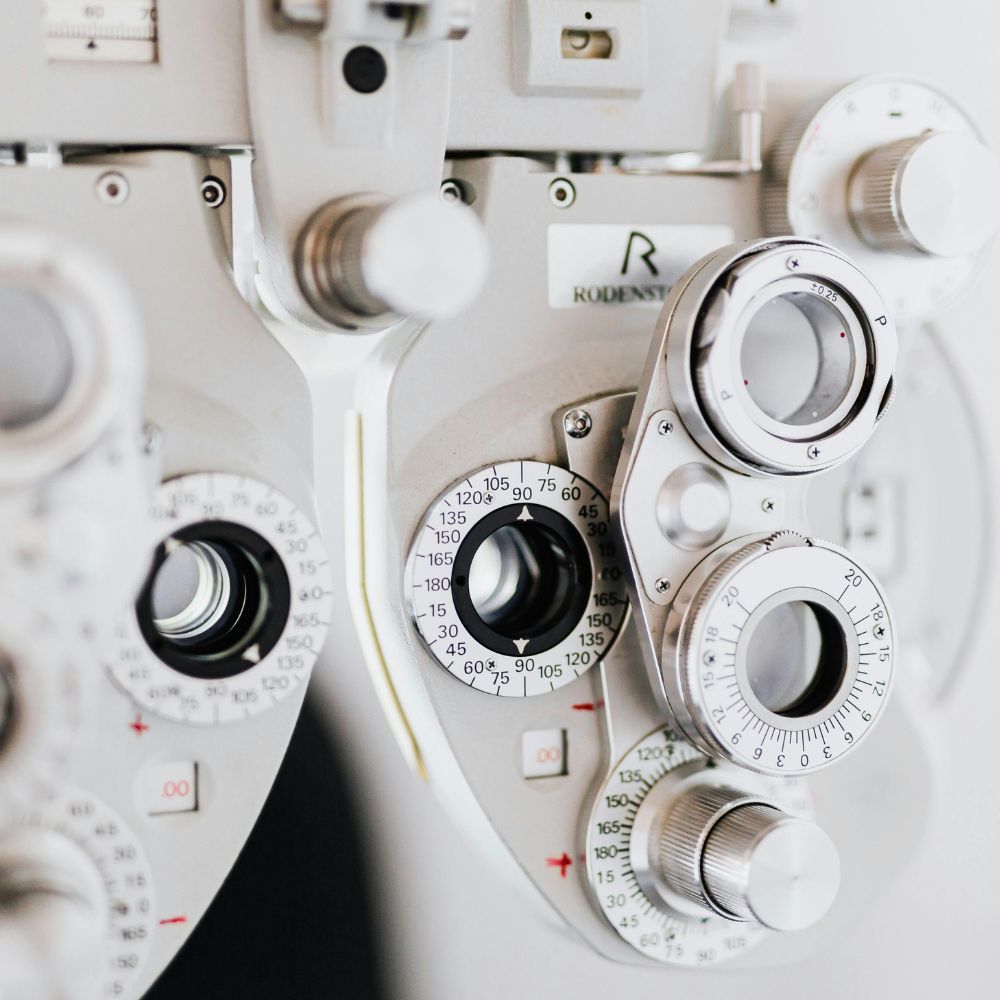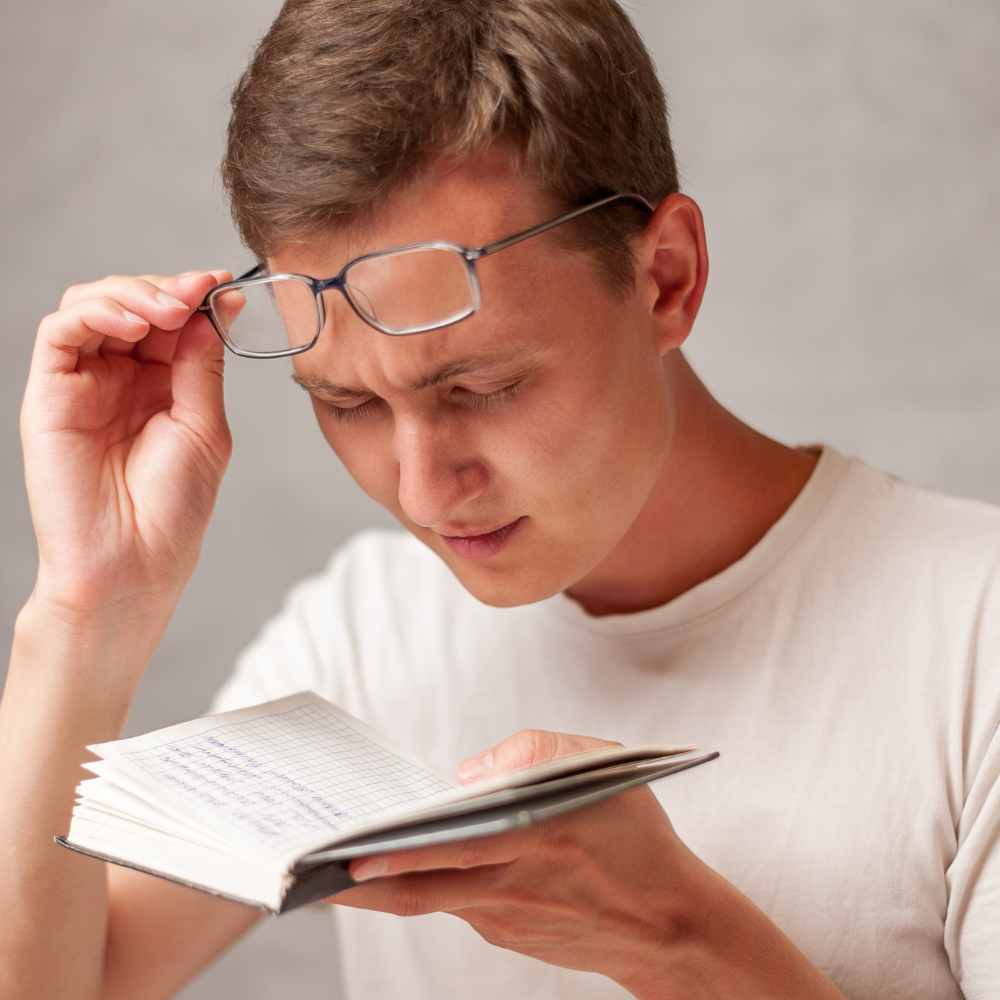eye Examination
An Eye Test Today Could Add Years to Your Sight

The Importance of Regular Eye Exams
Getting your eyes tested is simple, quick, and essential for maintaining good vision and overall eye health. At Optical Gallery, we recommend a comprehensive eye exam every two years—or more frequently if advised by your optometrist. Eye exams not only determine your vision accuracy but can also help detect serious health conditions such as diabetes, hypertension, and other systemic issues early on.
As a leading destination for eyewear and eye care, Optical Gallery offers more than just glasses—we offer complete vision solutions. Using the latest diagnostic technology, our experienced optometrists provide detailed, personalized eye exams, while our eyewear specialists help you select frames or lenses tailored to your prescription, style, and comfort.
Your glasses are more than a vision aid—they’re a style statement. At Optical Gallery, we feature premium designer eyewear from brands like:
Gucci • Prada • Ray-Ban • D&G • Versace
Our experts ensure you get both perfect vision correction and a flattering style that complements your wardrobe.
Prefer a lens-free look or want to highlight your eyes? We provide specialized contact lens fittings and prescriptions. Whether you need daily, weekly, or monthly disposables, or more advanced lenses like color-enhancing, bifocal, or multifocal lenses, we offer products from trusted brands including:
Acuvue • Bausch & Lomb • Alcon, and others.
Routine eye exams are crucial at every age:
- Children: Early screening (as young as 6 months) supports healthy vision development and learning.
- Adults: Keep your prescription current and check for signs of age-related eye conditions.
- Seniors: Monitor for cataracts, glaucoma, presbyopia, and other common conditions.
They also help detect signs of broader health issues like diabetes and high blood pressure.
The American Optometric Association recommends the following guidelines for low-risk individuals:
- Children:
- First exam at 6 months
- Again at 3 years
- Before first grade, then annually
- Adults:
- Every 2 years (or annually if over 60 or at risk)
At-risk individuals (with diabetes, hypertension, a family history of eye disease, etc.) should have more frequent exams as advised by their optometrist.
At Optical Gallery, your eye check includes:
A clear and simple vision test
A full eye health check-up
A short talk about any vision problems or discomfort
Help and advice in choosing the right glasses or contact lenses
Our friendly team will support you from start to finish—explaining everything clearly and helping you find the best eyewear for your comfort and style.
Common Eye Conditions & their Solutions

What is it?
Presbyopia is an age-related condition where the eye gradually loses its ability to focus on nearby objects. It usually becomes noticeable around the age of 40, even in individuals who have never had vision issues before.
Cause:
This occurs due to the natural aging of the eye’s lens, which becomes less flexible over time. The muscles around the lens also weaken, reducing the eye’s ability to change focus between distant and near objects.
Symptoms:
Difficulty reading small print
Needing to hold reading material farther away
Eye strain or headaches after reading or doing close work
Solution:
Presbyopia is corrected using reading glasses, bifocal, progressive, or multifocal lenses. Contact lens options, including multifocal and monovision lenses, are also available.

What is it?
Myopia is a refractive error where distant objects appear blurry while close objects can be seen clearly.
Cause:
It occurs when the eyeball is too long, or the cornea is too curved, causing light rays to focus in front of the retina rather than directly on it.
Symptoms:
Blurry vision when looking at distant objects
Squinting to see clearly
Eye strain or headaches, especially when driving or watching TV
Solution:
Myopia is managed using concave (minus-powered) lenses, either in eyeglasses or contact lenses. Refractive surgeries like LASIK can also permanently correct the condition

What is it?
Also known as hypemetropia, this condition makes it difficult to see nearby objects clearly, while distance vision remains relatively unaffected.
Cause:
Hypermetropia happens when the eyeball is too short or the cornea has too little curvature, causing light to focus behind the retina.
Symptoms:
Blurry near vision
Eye fatigue or strain during reading
Headaches after prolonged near tasks
Difficulty concentrating on close-up work
Solution:
Corrected using convex (plus-powered) lenses. Both eyeglasses and contact lenses are effective. In some cases, laser eye surgery can be considered for permanent correction.

What is it?
Astigmatism is a common refractive error where the cornea or lens has an irregular shape, causing blurred or distorted vision at all distances.
Cause:
Instead of being perfectly spherical, the eye’s surface is more oval-shaped, causing light rays to focus on multiple points rather than a single point on the retina.
Symptoms:
Blurred or distorted vision
Difficulty seeing clearly at night
Eye strain and discomfort
Frequent squinting
Solution:
Astigmatism is corrected with toric lenses—available in both eyeglasses and specially designed contact lenses. Laser correction surgeries such as PRK or LASIK are also viable options.

Book your consultation today
experience custom-made vision like never before.